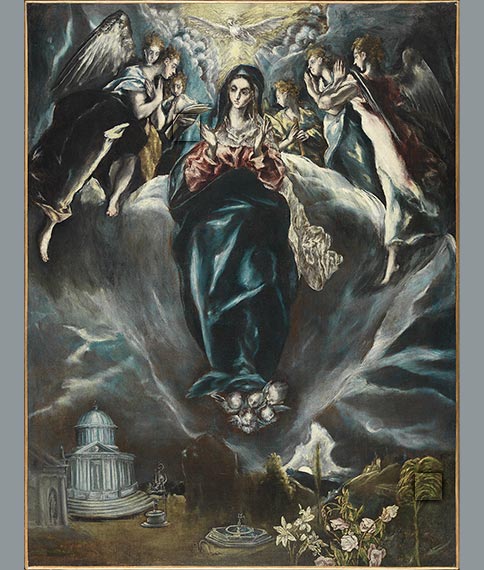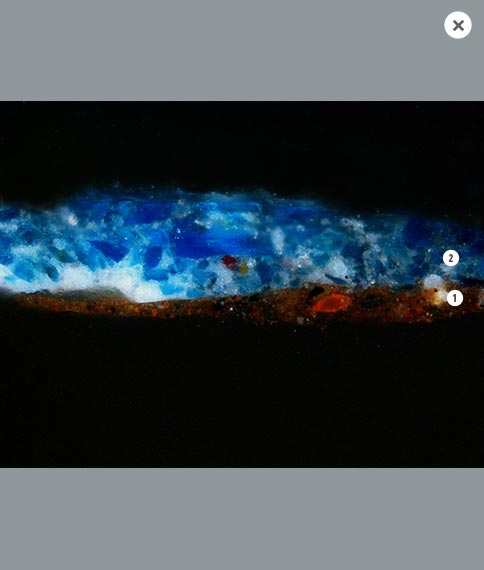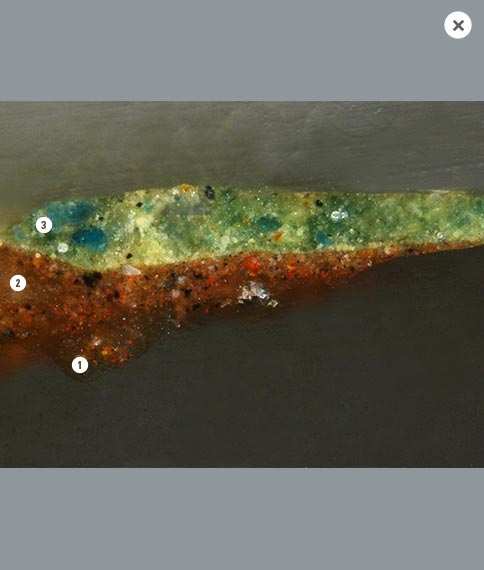MATERIALS ANALYSIS
Click on the specific area to see the details.
Blue of the Virgin’s mantle
This cross-section only penetrated as far as the primer layer (1), whose intense reddish-brown colour is owing to the abundance of red ochre, the tone of which was deepened by adding umber and carbon black pigments. In this case, trace residue from the palette is also present, though in smaller proportions than the previously analysed works. Above the red primer we see the layer of blue paint corresponding to the Virgin’s mantle (2) in which azurite pigments were mixed with granules of lapis lazuli in a base rich in white lead (on the mantle’s highlights). This layer is remarkable for its thickness and the coarse-ground texture of the exceptionally pure pigments used to create the colours.
Green of the plants on the right side of the scene
The lowest layer is the ground of gesso and animal glue (1), followed by a red primer (2) tinged in this area with umber, carbon black and minium that lend it a slightly orangey tone. Minium is not present in all of the microsamples taken from this work, meaning that the colour of the primer varies from reddish to orangey in different parts of the painting. This aspect is also influenced by the variety of tones found in the palette residue that El Greco nearly always added to his primers, as the analysis of the three works painted in Spain has revealed.
The plants were created by applying a single coat of paint (3) of considerable thickness with a remarkable abundance of pigments. The materials analysis has identified this as a blend of verdigris, lead-tin yellow (type I) and small amounts of carbon black and ochre pigments, all added to a base of white lead and bound with linseed oil.



